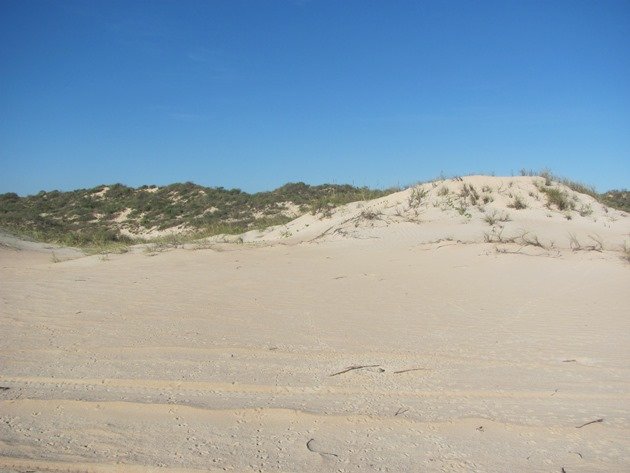
Although I was going to tell you more about our trip away after introducing you to Burra Rock Conservation Reserve last week there has been some interesting news in Broome! Traditionally since 2000 we have encountered our first Pied Oystercatcher eggs in the first week of July, but this year one pair have decided to start laying eggs early! Maybe they got confused by the sudden increase of nudist four wheel drive owners that arrived on their beach and thought it was already July this year! Sadly they have already lost one clutch of eggs to predation, so by July 1st this year they are on their second clutch. This is not surprising at all due to the fact that we have monitored the Pied Oystercatcher breeding success (or lack thereof ) since 2000 along a twenty three kilometre stretch of beach and it is very rare for any of the sixteen pairs to succeed. This pair of Pied Oystercatchers has been successful on one occasion and that was in 2012. Last year we had some hope at the end of the breeding season, but sadly the Pied Oystercatcher chick was predated and did not fledge. The last year that we had success was in 2014 and it was an incredible three Pied Oystercatcher chicks fledged by some older Pied Oystercatchers and they have been our most successful parents to date. They have not always partnered together, but the female bird appears to have a lot more luck than others. I say “luck” because there is a problem with predation by feral cats and it really is beyond their control as it were.
The first clutch of eggs were first observed on June 11th and were predated a few days later. They had used the nest area just behind the dunes that they often use for their first clutch each year. The next clutch was only one egg when we visited on June 29th and they were feeding at the high tide. They don’t need to sit on the eggs all of the time due to the temperature and some Pied Oystercatchers spend more time “shading” their eggs than others. They had chosen another nest site, which is a few hundred metres further north on Cable Beach and an area they also use each year after a nest failure. There are very few other shorebirds on Cable Beach at the moment, because the migratory shorebirds are in the northern hemisphere-hopefully breeding too! If you can’t see the nest in bottom of the feature photo I hope you can see it below! The Pied Oystercatcher tracks are quite a giveaway!
Pied Oystercatcher nest
Often one of the Pied Oystercatchers will be on the eggs and the other will roost nearby, so there will be another area with lots of tracks leading to it. They will both be watching out for predators and or nudists!!
Pied Oystercatcher roost
Between the beach and the dunes there are no end of tracks and of course they all head in the same direction. Sometimes they fly into their nest area, but mostly Pied Oystercatchers walk and they will walk away from the nest area to distract you if they think you know where they have laid their eggs.
Pied Oystercatcher tracks in the dunes
Sadly we don’t expect them to successfully raise chicks this early in the season, but you never know! We will watch and wait and it won’t be long and all of the other Pied Oystercatcher pairs will be laying eggs, because we have observed mating in the past week.
Red-capped Plovers have already successfully laid eggs and have young running about this past month, so some shorebirds have more luck than others.
Just in case you are wondering we do own a four-wheel drive, but choose not to drive on any beaches and we do wear clothes when we are checking on our breeding territories!
UPDATE:- Sadly by July 7th the egg had been predated, but other pairs have now laid eggs.


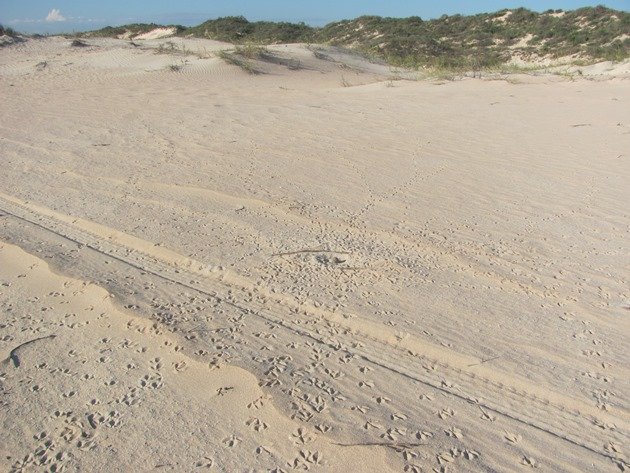
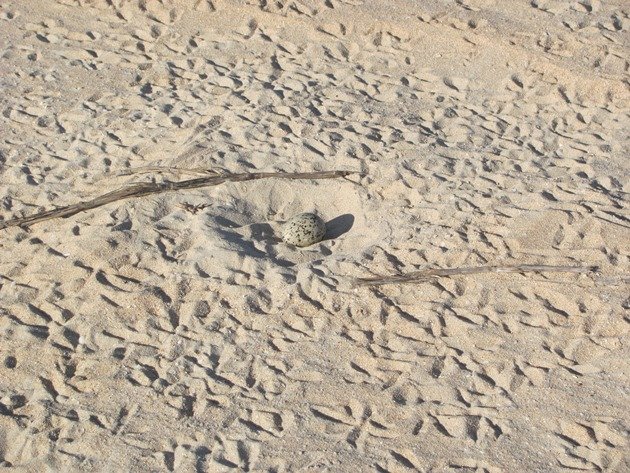
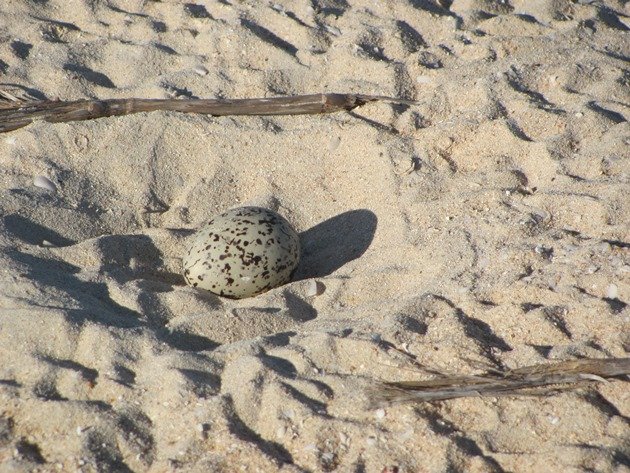
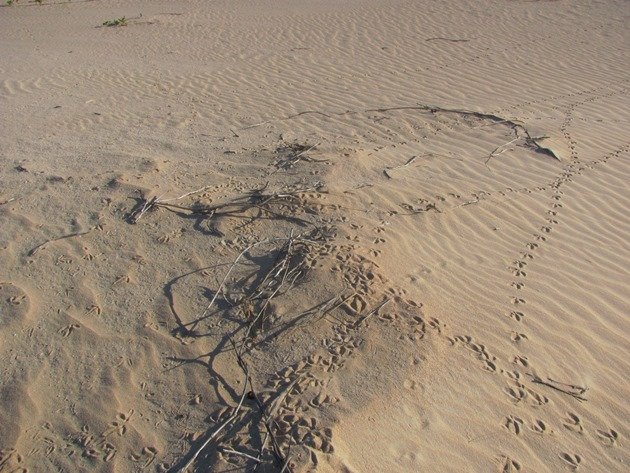
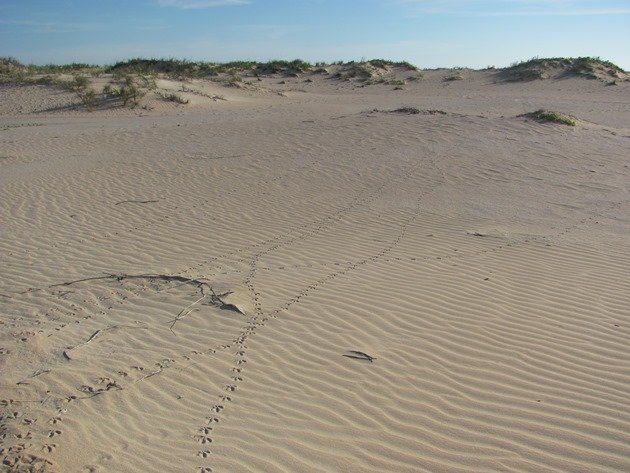











I love seeing all the tracks i the sand and the perfectly camouflaged egg. Fingers crossed, I do hope they are successful this year!